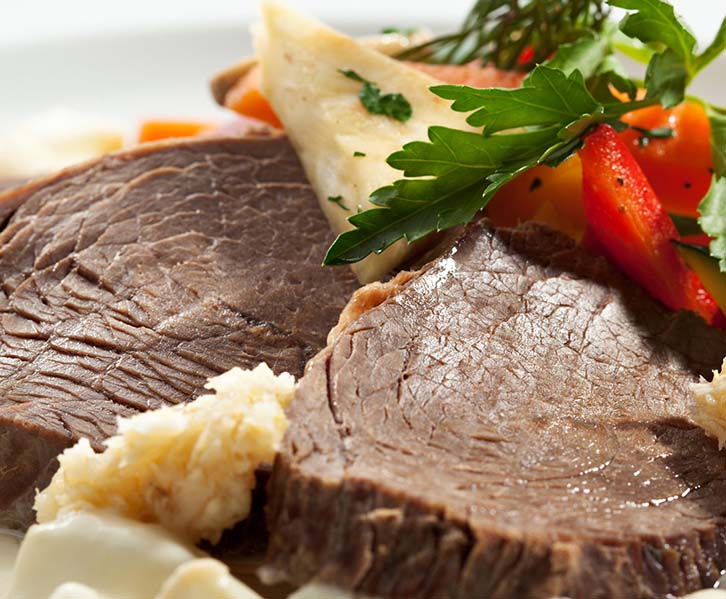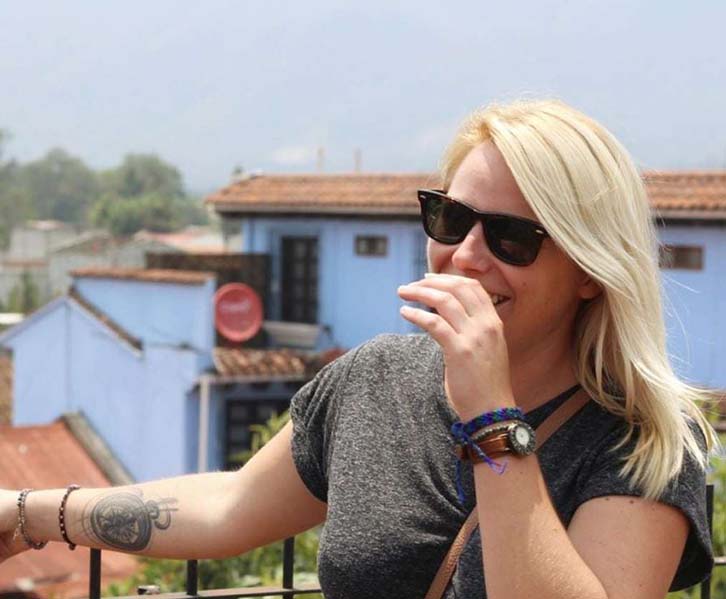For me, dining and travel are inseparable companions! There’s simply no more immersive way to experience a country’s culture than through its flavors.
Vienna is unique as the only capital city that produces noteworthy quantities of wine within its urban boundaries. I’ve also provided a list of Viennese wine varieties that you should sample during your visit to the city.
From indulgent desserts to the legendary Wiener schnitzel, and from velvety coffees to refreshing white wines, this encompasses all the culinary delights you must savor when visiting Vienna.
What Constitutes Viennese Cuisine?
Were you aware that Viennese cuisine is the sole culinary tradition named after a city rather than a nation?
Vienna has served as the capital of Austria for more than a millennium, and as a consequence, Viennese cuisine has been shaped by the various regions that were formerly part of the monarchy. Notably, the Austro-Hungarian Empire (1867-1918) has had a significant influence.
Traditional Viennese cuisine tends to be substantial and filling, characterized by an abundance of meat, potatoes, and cheese. However, Vienna is also renowned for its legendary coffee house culture and an array of delectable desserts.
One of the aspects that endeared me to Viennese cuisine is the city’s renowned expertise in pastries and cakes. From the iconic strudel to the legendary sachertorte, Vienna offers a plethora of delightful sweet treats waiting to be explored.
Pastries and desserts are frequently enjoyed alongside a cup of coffee during the afternoon hours. It’s a tradition I wholeheartedly embraced while exploring Vienna, and I highly recommend you do the same!
Here are some delectable dishes to savor in Vienna:
Wiener Schnitzel
Austria’s national dish, and arguably one of the country’s most internationally renowned culinary offerings, is the Wiener Schnitzel, which originated in the Austrian capital. This is evident in the dish’s name, with “Wiener” signifying Vienna in Austrian.
Traditionally, Wiener Schnitzel is prepared using veal, although these days, pork and chicken variations are also quite common. The dish involves flattening a piece of meat, coating it with breadcrumbs, and then frying it, typically in butter, until it turns a golden yellow hue.
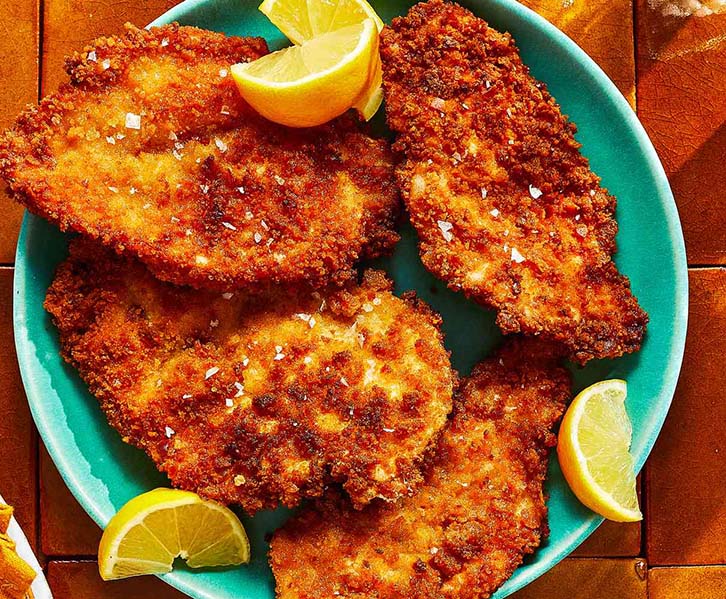
Typically, the crispy breaded cutlet is served with a lemon wedge and a sprinkle of parsley as garnish. Common accompaniments include potato salad or French fries.
You can savor Wiener Schnitzel at restaurants all around the city, making it convenient to sample this delicious Austrian dish during your visit to Vienna.
Sachertorte
Sachertorte, or Sacher Torte, is an incredibly indulgent chocolate cake named after its inventor, Franz Sacher. The cake’s history traces back to 1832 when Franz Sacher created it for a dinner hosted by Prince Metternich in Vienna, intended for esteemed guests. The legacy continued as Sacher’s son inaugurated the Hotel Sacher in 1876, which would later become renowned as the “home” of the sachertorte.
So, what exactly is sachertorte? It’s a chocolate cake comprising two layers of dense chocolate sponge with a delicate layer of apricot jam sandwiched in between. The entire creation is enveloped in a thick chocolate icing, resulting in a flawlessly smooth circle of sumptuous chocolate delight. Typically, a slice is served with a generous dollop of whipped cream and pairs wonderfully with a cup of coffee.
While you can find sachertorte at cafes and bakeries throughout Vienna, there is truly no better place to savor this heavenly chocolate masterpiece than at its place of origin, Cafe Sacher Wien within the Hotel Sacher. The cafe exudes opulence, adorned with crystal chandeliers and regal red decor—making it a perfect respite after a morning of exploring Vienna’s magnificent palaces. It’s advisable to arrive early, as there’s often a queue extending out the door in pursuit of a coveted seat at this iconic establishment.
Tafelspitz
Another Austrian national dish and an integral part of traditional Viennese cuisine is Tafelspitz. Legend has it that this was Emperor Franz Joseph I’s favorite dish, making it an absolute must-try when visiting Vienna.
Tafelspitz is a hearty and comforting meal, ideal for wintertime, featuring boiled beef or veal cooked alongside root vegetables in a delicate broth. The name “Tafelspitz” refers to the specific cut of meat used, known as topside in the UK (or standing rump in the US).
Typically, Tafelspitz is served with thinly sliced roast potatoes and accompanied by a dollop of sour cream garnished with chives. Additionally, a delectable sauce is prepared by blending pureed apples with slices of fresh horseradish. This fruity yet spicy sauce adds a burst of flavor to the dish, enhancing its overall taste and preventing it from becoming too bland.
I had the opportunity to savor Tafelspitz at Reinthaler’s Beisl, a charming and hospitable restaurant renowned for its expertise in serving traditional Austrian cuisine, conveniently located in the heart of Vienna city center.
Würstel
If you’re in the mood for a fast, satisfying snack while exploring (or bar-hopping) in Vienna, you can’t go wrong with a würstel!
Würstel simply translates to sausages, but these are an immensely popular street food treat in Austria. Vienna is dotted with Würstelstands, where you can indulge in hot grilled sausages, either sliced or nestled in a crusty baguette (for a tastier take on a hot dog!).
Traditional Wiener Würstel typically consists of a blend of beef and pork, encased in a sheep’s intestine. However, most würstelstands offer a range of options, including bratwurst, frankfurter, and currywurst. Be sure not to overlook the beloved Käsekrainer, a sausage filled with cheese.
Käsespätzle
Käsespätzle isn’t originally a Viennese specialty but rather an Alpine dish with its roots in Germany. Nonetheless, it has gained immense popularity throughout Austria, and you’ll encounter it on menus across Vienna.
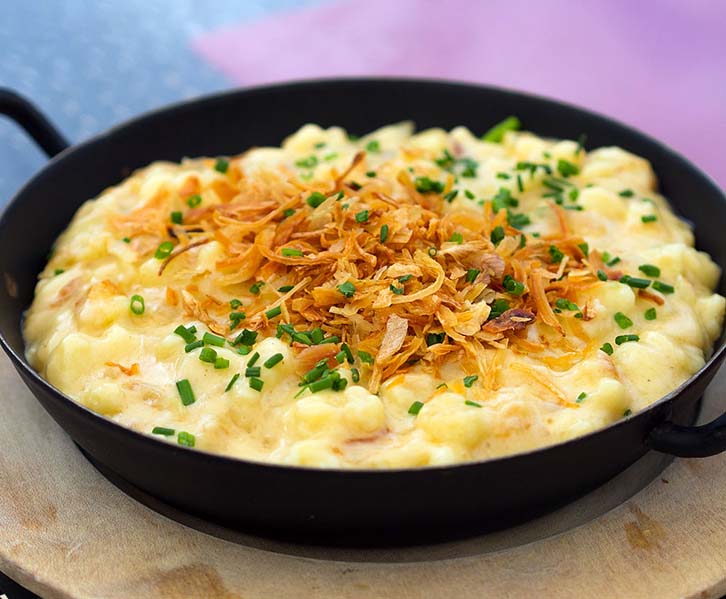
I first encountered käsespätzle during my visit to Vorarlberg a few years ago and instantly fell in love with it. Therefore, I was thrilled to find that it enjoys widespread popularity in Vienna as well.
Also referred to as kasspatzln in Tyrol, käsespätzle consists of tender egg noodles or dumplings (spätzle) enveloped in cheese and baked to perfection. It’s somewhat reminiscent of an Austrian take on mac ‘n’ cheese!
This delectable, cheesy delight is garnished with a generous serving of crispy fried onions. It’s a straightforward yet hearty dish that unquestionably merits a taste when you’re in Austria.
Austrian Goulash
Goulash is originally a Hungarian dish, but Austria has its own rendition of this robust meat stew, occasionally referred to as Wiener goulash.
Traditional Austrian goulash typically features beef and onions cooked in a tomato-based sauce infused with the flavors of paprika. The sauce is generally thick and rich, distinguishing it from Hungarian goulash, which tends to have a slightly more soup-like consistency.
Another contrast between the two styles is that Hungarian goulash frequently includes bell peppers and/or potatoes, while the Austrian version of the dish contains only beef and onions.
Apfelstrudel (Apple Strudel)
Alright, let’s return to desserts! One Austrian treat that’s almost universally recognized is apfelstrudel, also known as apple strudel.
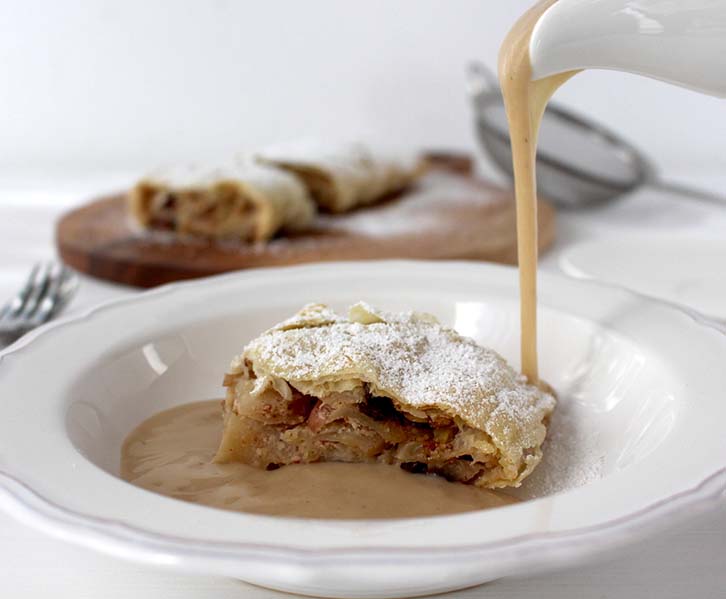
Strudel is a dessert crafted from an incredibly thin, delicate, and flaky pastry that is wrapped around a filling and baked. Typically, the filling is fruit, and the most famous variation is apple strudel.
Here’s an interesting tidbit: the name “strudel” is derived from the German word for whirlpool or eddy, owing to the swirling shape the dessert takes on once it’s sliced open.
Although strudel is closely associated with Austrian cuisine, it is believed to have drawn inspiration from Turkish baklava pastry, which was introduced to Austria in 1453. The oldest known strudel recipe, handwritten in 1696, still exists in the archives of the Viennese City Library.
Topfenstrudel (Cream Cheese Strudel)
Another fantastic strudel that you must sample in Vienna is topfenstrudel, also known as cream cheese strudel.
This indulgent Austrian dessert features the same delicate pastry as other strudels but boasts a filling made from sweetened curd cheese and raisins, resulting in a flavor reminiscent of cheesecake with a texture akin to the UK’s bread and butter pudding. In essence, it’s dense, creamy, and incredibly delicious!
Kaiserschmarrn
I came across kaiserschmarrn during my summer visit to the Salzburgerland region of Austria and couldn’t resist indulging in it repeatedly.
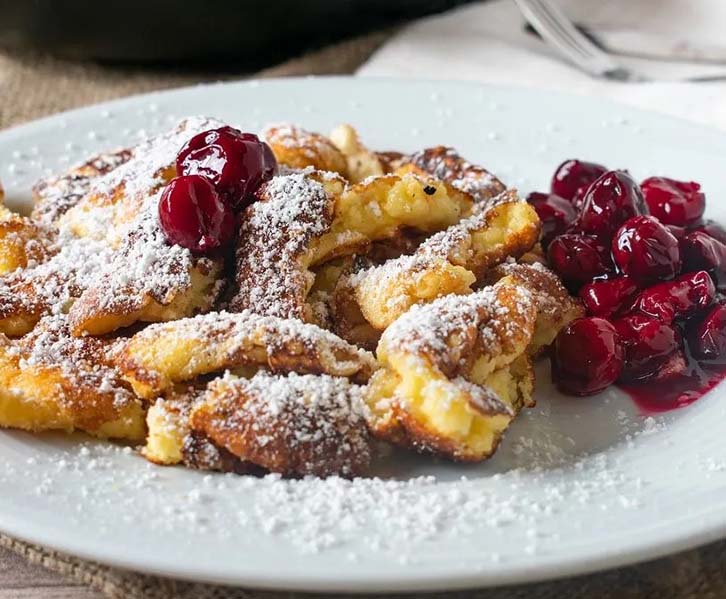
Essentially, it’s a light and airy pancake crafted from a sweet batter, often including rum-soaked raisins, as per the original recipe. The pancake is then served in shredded form and dusted with powdered sugar.
Traditionally, these pancake chunks are accompanied by a warm plum sauce. However, you can also find them served with various fruits.
This dessert is beloved throughout Austria and many regions of the former Austro-Hungarian Empire. However, it is named after Austrian Emperor Franz Joseph I (kaiser = emperor), who resided in Vienna. Therefore, it makes for an excellent dish to sample after visiting his former residence at the Hofburg Palace.
Manner Wafers
Another delightful treat you absolutely must try in Vienna is Manner Wafers. However, be forewarned—you probably won’t be able to resist having just one!
I adore these petite wafer biscuits, which resemble a hazelnut variation of the UK’s Pink Wafers (a beloved 90s children’s party snack).
This iconic Viennese delight was created in the 1890s by Viennese confectioner Josef Manner. The Original Neopolitan is the classic version: five layers of wafers filled with four layers of sweet hazelnut cocoa cream.
While there are numerous contemporary flavors and variations available today, the classic remains the most popular and is an absolute must-try culinary experience in Vienna.
In Vienna, you can explore a wide array of wafer varieties, as well as other confections and merchandise, at the flagship Manner store on Stephansplatz. However, you can also purchase Manner Wafers at supermarkets and newsagents all across the city.
Punschkrapfen
If you haven’t had your fill of sweet treats yet, there’s one more Austrian dessert you should sample in Vienna. Punschkrapfen, or punch cake, is a beloved Viennese classic that bears a resemblance to a more upscale version of my favorite cakes, Fondant Fancies!
It’s composed of an incredibly light sponge cake filled with jam and soaked in rum. This concoction is then cut into small square cubes and generously coated with a vibrant pink punch glaze.
The origin and creator of this cake remain shrouded in mystery, and its arrival in Vienna is an enigma, possibly dating as far back as the Middle Ages! While you can discover it at bakeries all across Vienna, the Original Wiener Punschkrapfen purports to offer the authentic version of this delightful, sticky, and sweet pink confection.
Viennese Coffee – Melange and More
While Italians may have greater renown for coffee, in Vienna, the culture of coffee houses has been elevated to a true art form.
In Vienna, the quintessential coffee to savor is the Wiener Melange. Resembling a cappuccino but typically crafted with a gentler coffee, it consists of a shot of espresso crowned with steamed milk and milk foam.
Various interpretations of this coffee delight can be found in coffee houses all around the city. One of the most beloved variations involves adding whipped cream atop the milk foam, often referred to as a Franziskaner.
Another well-liked coffee beverage is the Kaffee Maria Theresia, named in honor of the 18th-century Habsburg empress. It features a double espresso shot blended with orange liqueur and garnished with whipped cream. While this creates a sumptuous indulgence, I found it to be a tad too alcoholic for my taste!
Wines from Austria to Savor in Vienna
Vienna boasts an impressive 700 hectares (1,680 acres) of urban vineyards, making it the only capital city globally to produce such a substantial amount of wine within its city boundaries. Vienna’s wines have also gained recognition as some of the finest in the world.
Numerous wineries and vineyards in Vienna can be conveniently accessed by tram or on foot from the city center. Therefore, be sure to plan a visit to one of them for a tour and tasting to delve deeper into the world of Viennese wine.
Gruner Veltliner
The vineyards in the vicinity of Vienna predominantly cultivate white grape varieties, with the local favorite being Grüner Veltliner. It’s an essential beverage to sample during your visit to Vienna.
Grüner Veltliner is a dry white wine that pairs wonderfully with local dishes such as Wiener Schnitzel. According to Wine Folly, Grüner Veltliner starts as a light and tangy wine when young but develops into a richer flavor as it ages.
You’ll find Grüner Veltliner featured on the wine lists of nearly every restaurant and bar in the city. One of my personal favorites was Vis a Vis, Vienna’s smallest wine bar, known for its friendly and cozy ambiance.
Welschriesling
Another primary grape variety cultivated in the vicinity of Vienna is Welschriesling. Unrelated to the more famous Rhine Riesling, Welschriesling is esteemed for its freshness and neutrality, making it an effortlessly enjoyable dry white wine.
While less prevalent than the renowned Grüner Veltliner, be sure to keep an eye out for Welschriesling. We had the opportunity to taste it at The Gloriette at Schönbrunn Palace, a visit well worth it for the stunning views alone!
“Champagne” Tasting at Schlumberger
Sparkling wine enthusiasts should make their way to Schlumberger Kellerwelten in Vienna. Established in 1842, they produce their sparkling wine using the champagne method. It’s only the vineyard’s location that prevents this delightful bubbly from being labeled as Champagne!
Explore Vienna’s oldest champagne cellar (the vaults are approximately 300 years old) and indulge in a tasting session – all within the city center! A tour, which includes three glasses of champagne, starts at just 16 euros.
Other Dining Options in Vienna
If you’re in the mood for something different from traditional Viennese cuisine, Vienna boasts a plethora of fantastic restaurants offering a wide variety of international cuisines. Here are a couple of my favorite discoveries:
Reserva Ibérica – offering Spanish-inspired tapas, wine, and sangria.
Ristorante Fratelli – serving delectable Italian cuisine with an impressive wine selection. Don’t miss the truffle pasta if it’s available on the menu!
